Mezzo-soprano Rosie Middleton looks like she is singing through clenched teeth as she moves towards and away from the haunting sound of Stephen Upshaw’s viola playing. At other times, she lets her body slide down to the floor while singing softly.
Later, she looks forlornly at the audience and then turns her back on us, channelling her voice towards a stone column. The performance culminates with her lying on the central paved circle of the inner courtyard at the Royal Hospital Kilmainham in Dublin as her voice and the music of the viola echo through the space.
These opening performances at The Wernicke’s Area, Anu Productions’ new sound and visual installation at the Irish Museum of Modern Art (IMMA), will be played on video throughout the show until it closes on November 6th.
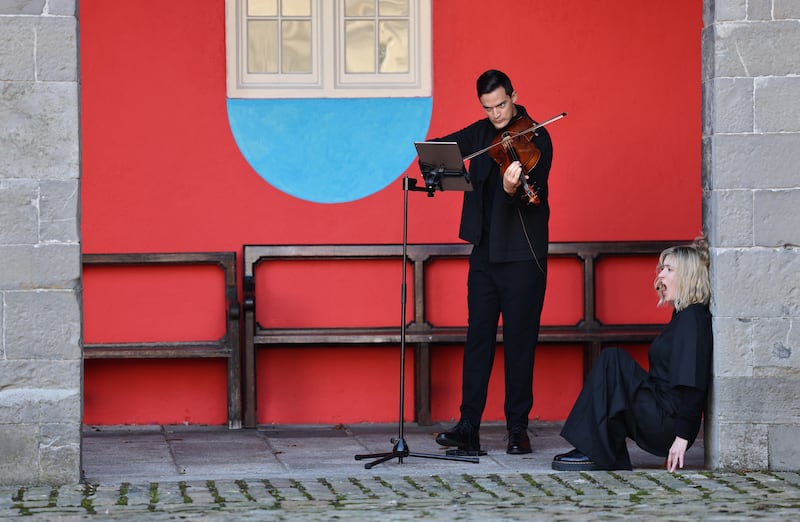
The work is a fascinating and poignant art-science exploration of epilepsy as experienced by Debbie Boss, the wife of Anu Productions’ co-artistic director and visual artist, Owen Boss. Following surgery to remove a meningioma brain tumour in 2014, Debbie picked up a virus in hospital and was induced into a coma for 11 days.
RM Block
The Wernicke’s Area is involved in written and spoken-word comprehension and during an epileptic seizure, Debbie loses the power to speak clearly
“The risk of her getting a bacterial infection meant they had to take her off the ventilator, unsure that she would breathe on her own. She spent over two months more recovering in hospital and she developed epilepsy a while later,” explains Owen.
Debbie’s tumour was in the Wernicke’s Area of the brain and her husband got permission from Beaumont Hospital to display scans of Debbie’s brain as part of the installation. The Wernicke’s Area is involved in written and spoken-word comprehension and during an epileptic seizure, Debbie loses the power to speak clearly. She also loses the power to understand what others say to her. And although a trained soprano, she can no longer remember the lyrics to even the simplest songs.
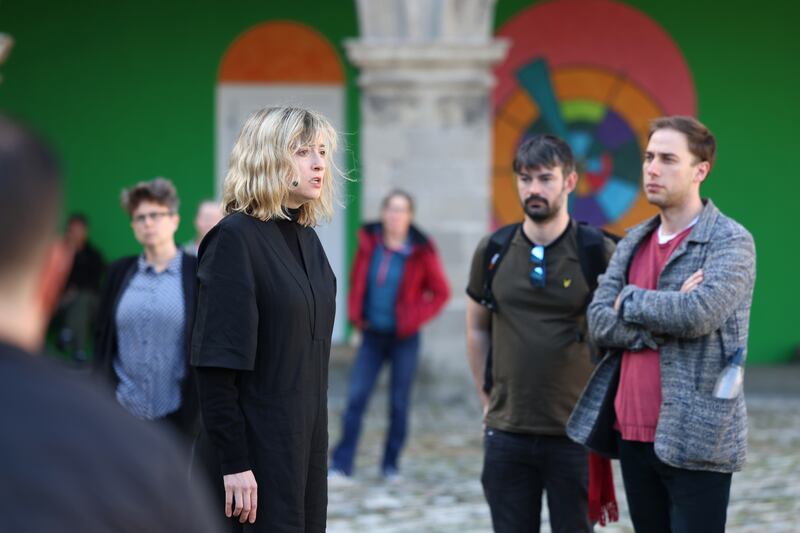
Owen’s decision to use his wife’s traumatic experiences as the basis for an art installation emerged from Debbie’s seizure diaries in which she recorded her feelings following each seizure.
“This work was borne out of the coalface of experience of a loved one with epilepsy. Epilepsy affects Debbie holistically in that her feet are always in the shallows but when she has a seizure, she becomes fully immersed,” he says as we chat following the first live performance at IMMA.
Although at this performance with the couple’s two daughters, Debbie doesn’t want to speak publicly about the impact of her illness.
Soundscapes
The art and sound installation at IMMA, which evolved through Owen’s collaborations with neurophysiologist, Prof Mark Cunningham from Trinity College Dublin (TCD) and Emily Howard, director of PRiSM, the centre for Practice & Research in Science and Music at the Royal Northern College of Music in Manchester, speak for themselves.
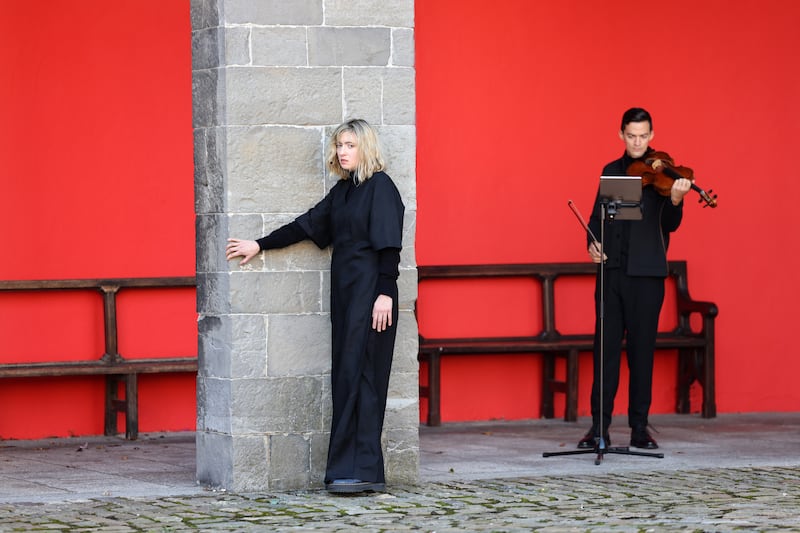
But the collaboration between a scientist, a composer and an artist is fascinating in itself and Debbie’s seizure diaries were central to this process. “All of my composition decisions came from the diaries,” says Emily Howard. (Anu Productions had previously collaborated with Howard at the Manchester International Arts Festival in 2018 and they kept in touch).
Debbie describes how one day she walked from Henry Street to Gardiner Street in Dublin but later had no recollection of this walk as it happened during a seizure
Emily composed the music for the viola and voice in the opening performances. She also created some of the soundscapes in the IMMA show from various situations Debbie described in her seizure diaries.
For example, Debbie describes how one day she walked from Henry Street to Gardiner Street in Dublin but later had no recollection of this walk as it happened during a seizure.
“So, PRiSM sound designer Bofan Ma recorded all the sounds on that walk and we incorporated it with industrial and hospital sounds and the artificial intelligence (AI) sounds of seizures for the installation,” Emily says.
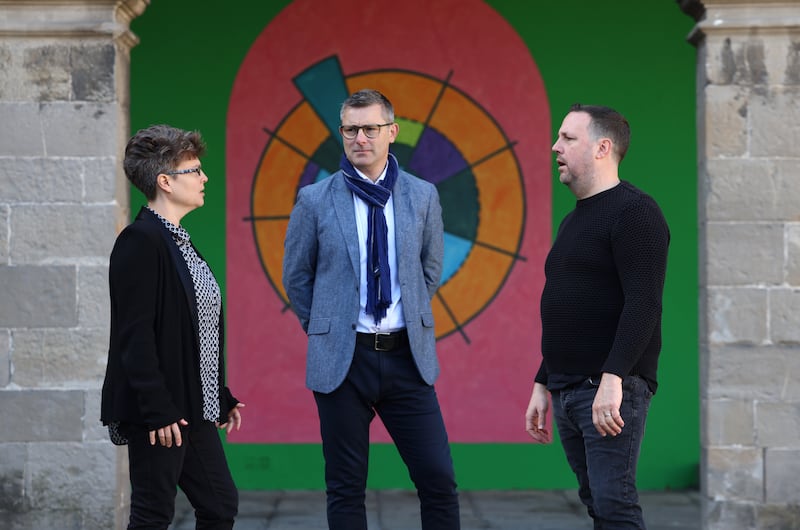
The use of AI software for creating music is central to the work at PRiSM. “We put data sets of sound through the software to create music. So, for example, we took a data set of brain seizure activity and put it through the programme. The software learned the patterns and produced its own version of the sounds,” Emily adds. The composer also put some of Debbie’s favourite arias through the AI software, stretching out the sounds in places and speeding them up in others so that the sounds mirror the experience of the seizures.
Mark Cunningham is professor of neurophysiology of epilepsy at TCD and investigator of brain tumour-related epilepsy at the Royal College of Surgeons FutureNeuro research centre for neurological diseases in Dublin.
“It’s common to have epilepsy after a brain tumour, either due to the pressure that the tumour applied to the brain causing physical damage, as in Debbie’s case, or that the brain cells become rewired in a way that the threshold to induce seizure activity is reduced,” he says.
‘Like an orchestra’
“Brain cells are like an orchestra creating music. When they are damaged, they can synchronise in a hyper way with no ability to stop the reverberations,” he adds.
Working with neurosurgeons at Beaumont Hospital, he brings live diseased brain tissue (with patients’ permission) back to his laboratory for investigation.
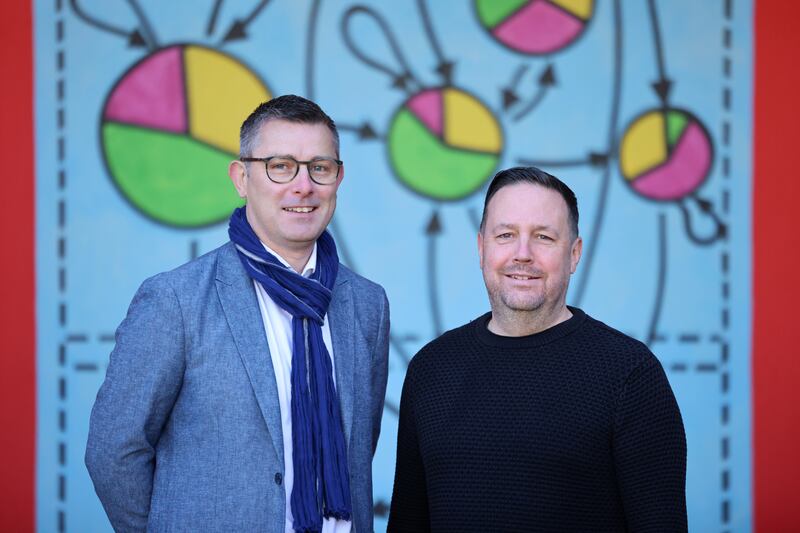
“We stick a microelectrode array into this brain tissue so that it generates seizure activity and we record this electrical activity and look at the signals visually to see if we could try new experimental compounds to treat epilepsy,” he adds.
By studying the visual display of the sound wave of the seizure activity (eg does the wave shorten, is the peak of the wave lower or is the wave abolished completely?), researchers can test out new drugs on this diseased tissue. The sound of the seizure activity is amplified and played on repeat as part of the installation at IMMA.
He met Owen Boss during an online residency at the Science Gallery in Dublin during Covid and many of their discussions inspired aspects of The Wernicke’s Area.
‘Mark told me about how the Nobel Prize-winning scientist Charles Scott Sherrington described how brain cells communicate with each other as like millions of flashing shuttles weaving a pattern’
“As an academic, engagement with the public is important. It makes complex stuff we do in a laboratory more accessible but there has to be a human story too,” says Mark, who found the opening performance an emotional experience.
The final element of this visual and sound installation — and possibly the most memorable for the public — is the long textile hangings in what Owen called the tapestry room.
“Mark told me about how the Nobel Prize-winning scientist Charles Scott Sherrington described how brain cells communicate with each other as like millions of flashing shuttles weaving a pattern, and I decided then to make a visual language around Debbie’s story using tapestry,” Owen says.
Floral patterns
Following research into the composition of William Morris-type patterns, he created floral-like patterns devised from the chemical formulas of his wife’s epilepsy medications and brain scans. “To me, this portrait of Debbie becomes active when people come to see it and bring their own context. It’s about experiencing the sounds and texts of the installation together with your own experience.”
The Wernicke’s Area continues at the Irish Museum of Modern Art, Royal Kilmainham Hospital, until November 6th. For details, see imma.ie/whats-on/anu-the-wernickes-area
















